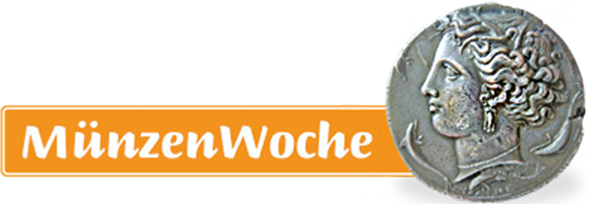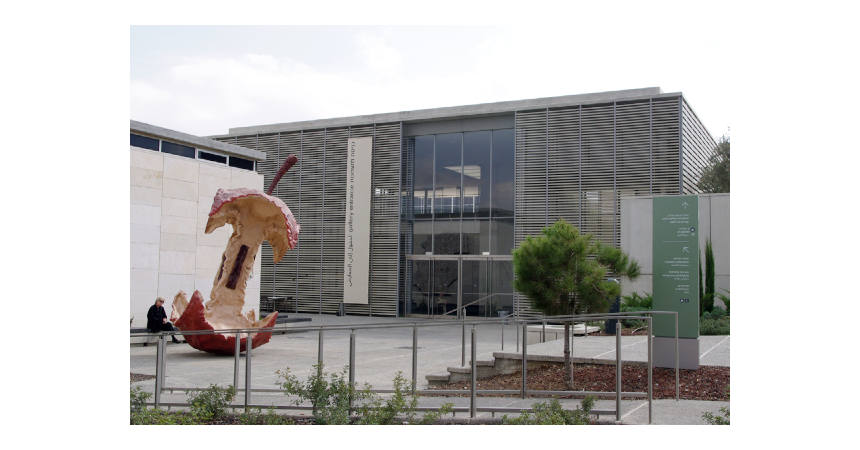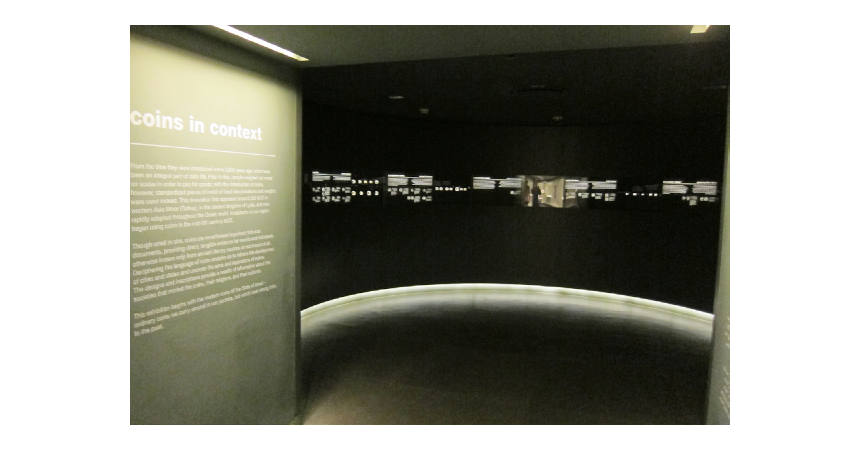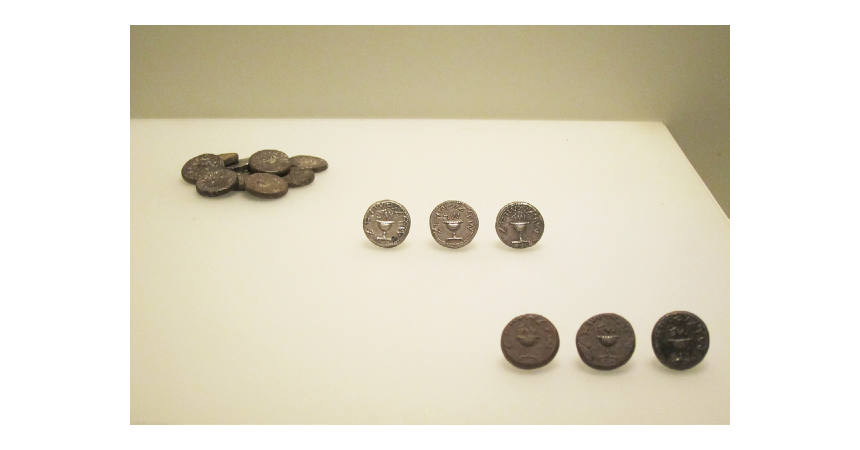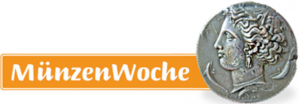Israel Museum, Samuel and Saidye Bronfman Archaeology Wing
Wenn es kein Logo gibt, wird diese Spalte einfach leer gelassen. Das Bild oben bitte löschen.
(Dieser Text wird nicht dargestellt.)
10 Ruppin
Blvd., Jerusalem, Israel
Tel: +972 (0)26708811
Near the southern end of the 20-acre campus of the Israel Museum, the country’s largest cultural institution, is the Samuel and Saidye Bronfman Archaeology Wing. The original pavilion opened on May 11, 1965 and had its own numismatic exhibition area. As part of a three-year renovation program, the new archeology wing opened on July 25, 2010. Most of the numismatic specimens are now integrated among the Museum’s other historical exhibits with the exception of one specialized numismatic gallery.
The newly transformed wing is organized chronologically from “Dawn of Civilization” to the Ottoman Empire (“Muslims and Crusaders”) in seven galleries, or “chapters.” All exhibit text is in Hebrew, Arabic, and English. The quote from Deuteronomy 28:6 is seen by every visitor at the Museum’s entrance hall: “Blessed shall you be when you arrive and blessed shall you be when you depart.”
Israel and the Bible
Of the seven “chapters,” the third is the first of any numismatic significance: “Israel and the Bible.” On display is an assembly of some of the ancient weights from the 7th to the 6th centuries BCE that were used as monetary units. The shekel comes from the Hebrew ma’shekal, meaning weight. Specimens, that look like round balls, include: eight gerah, one, two, four, 40, and 400 shekels, pim, and nezef.
Greeks, Romans and Jews
Here are Greek silver coins from the reign of Alexander the Great (356-323 BCE) who conquered Judea in 332. Coins from the Hasmonian dynasty (142-63 BCE) established by Simon Maccabaeus, plus those of John Hyrancanus (134-104 BCE) and Mattathias Antigonus (40-37 BCE), who was the last Hasmonian king of Judea, are featured.
Under Roman Rule
Included here are silver shekels of the First Jewish Revolt from years 2, 3, 4, and the rare year 5 shekel, plus a hoard of shekels found at the Dead Sea fortress of Masada which was defended against the Romans after Jerusalem had been taken by Titus in 73 CE. Also on display are silver tetradrachm (shekels), denarii (zuzim, one-fourth of a shekel), and bronze coins from the Bar Kokhba revolt (132-135 CE).
The Holy Land, Muslims and Crusaders
This area of the Museum includes some earliest Islamic coins among the historical exhibits such as 7th-century silver dirhams, gold dinars, and copper fals of the Umayyad dynasty (661-750 CE/41-132 AH). This area also includes the first Islamic coin, a gold dinar (676 CE/7 AH) from Damascus, the dynasty’s capital.
In the last “chapter”—“Muslims and Crusaders,” there is a selection of dinars from 886 to 1035 CE in addition to several hoards of coins and jewelry of the 11th-century Fatimid Period, which were found at Tiberias in the Lower Galilee.
Coins in Context
This is the only gallery solely dedicated to numismatics in the Archaeology Wing. In 10 panels, this exhibit begins with the modern coins of the State of Israel—ordinary coins Israelis carry around in their pockets, but which bear strong links to the past.
Some of the topics in this gallery include: Birth of Coins; The First Local Coins; The Ancient Dollar—the tetradrachm; Propaganda on Coins—Roman suppression of the First Jewish Revolt 70 CE; Portraits; Coins of the State of Israel.
One additional topic, Israel’s Stamps, tells how the design for Israel’s first stamps of 1948, doar Ivri (Hebrew Post), was taken from the ancient shekels of the First Jewish Revolt of 70 CE. The three highest stamp denominations 250 mils, 500 mils, and 1,000 mils were based on the shekels year 2, year 3, and year 4 respectively.
The Bank of Israel’s Visitor Center is nearby at 2 Kaplan Street, Giv’at Ram, and a visit there is highly recommended.
This text was written by Howard M. Berlin and first published in his book Numismatourist in 2014.
You can order his numismatic guidebook at Amazon.
Howard M. Berlin has his own website.





